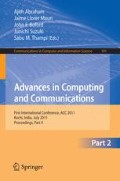Abstract
Understanding how population dynamics change over time is critical to many practical problems as pest control, endangered species protection etc. Teaching population ecology is not easy since data is usually collected over a very long period. This paper discusses a specific tiger population case study relating to growth rate predictions using an online virtual lab. Studying tiger populations and introduction of such data in classrooms help in creating awareness and support new pedagogies to estimate animal population dynamics. We have used online virtual labs which are ready-made tools to perform simple experiments and analysis. An important and usually complex case of population analysis as in tiger populations in India is studied in this paper. Although some major parameters like food, transient movement, and ecosystem details have been ignored, predicted data for tiger population follows closely to actual data for previous years and even predicts the growth rate with a small standard deviation of 10%. Our results with tiger populations come close to the actual census values. We propose the use of simple mathematical models to make assessment of transient animal populations such as tigers, and sharks. Also use of such ready-made pro-academic online tools encourages new studies and an enhanced pedagogy to population ecology for mathematicians, biotechnologists, wildlife institute personnel among many other crossdisciplinary scientists.
Access this chapter
Tax calculation will be finalised at checkout
Purchases are for personal use only
Preview
Unable to display preview. Download preview PDF.
References
Gilman, S.L.: Do Online Labs Work? An Assessment of an Online Lab on Cell Division. American Biology Teacher 68(9), 131–134 (2006)
Gumaraes, E., Maffeis, A., Preire, J., Russo, B., Cardoso, E., Bergeman, M., Magalhaen, M.: REAL: A virtual laboratory for mobile robot experiments. IEEE Trans. Educ., 37–42 (2003)
Bijlani, K., Manoj, P., Rangan, V.: VIEW: A Framework for Interactive eLearning in a Virtual World. In: Proceedings of the Workshop on E-Learning for Business Needs, BIS, Austria, pp. 177–187 (2008)
Mowryn, M.M., Shegog, R., Murray, G.N.: An Innovative Approach to Impacting Student Academic Achievement and Attitudes: Pilot Study of the HEADS UP Virtual Molecular Biology Lab, Advances in Teaching and Learning Day, 4 -20 (2007)
Mahdavi, A., Metzger, G.: Towards a virtual laboratory for building performance and control. In: Trappl, R. (ed.) Cybernetics and Systems 2002, pp. 281–286. Austrian Society for Cybernetic Studies, Vienna (2002)
Lim, C.P.: Engaging Learners in Online Learning Environments. TechTrends: Linking Research & Practice to Improve Learning 48(4), 1623 (2004)
Quitadamo, I.J., Brown, A.: Effective teaching styles and instructional design for online learning environments. In: National Educational Computing Conference, IL. ERIC Chicago (2001)
McDonald, J.: Is “as good as facetoface” as good as it gets? Journal of Asynchronous Learning 2(2), 1223 (2002)
Diwakar, S., Achuthan, K., Nedungadi, P., Nair, B.: Enhanced Facilitation of Biotechnology Education in Developing Nations via Virtual Labs: Analysis, Implementation and Case-studies. International Journal of Computer Theory and Engineering 3(1), 1–8 (2011)
Endangered Species, http://www.theinsite.org/earth/earth_es_tiger.html
Larry, R., Bertola, G.: Introduction to Population Ecology. Blackwell Pub., Cambridge (2006)
Tiger Project India, http://projecttiger.nic.in/populationinstate.asp
WPSI’s Tiger Poaching Statistics, http://www.wpsi-india.org/statistics/index.php
Karanth, K., Nichols, U., Kumar, J.D., Hines, N.S., Assessing, J.E.: tiger population dynamics using photographic capture-recapture sampling. Ecology 87(11), 2925–2937 (2006)
Ajlan, J., Sharma, S.K.: Camera trapping the Indochinese Tiger, Panthera tigris corbetti, in a secondary forest in peninsular Malaysia. The Raffles Bulletin of Zoology 51(2), 421–427 (2003)
Plowden, C., Bowles, D.: The illegal market in tiger parts in northern Sumatra, Indonesia. Oryx 31, 59–66 (1997)
Rabinowitz, A.: Chasing the dragon’s tail: the struggle to save Thailand’s wild cats. Doubleday, New York, 280 (1991)
Shaharuddin, W., Potential, N.: poaching threat to large mammals in Belum and Taman Negara. The Journal of Wildlife and Parks 16, 135–139 (1999)
Seidensticker, J.: Large carnivore and the consequences of habitat insularisation: ecology and conservation of tigers in Indonesia and Bangladesh. In: Miller, S.D., Everett, D.D. (eds.) Cats of the world biology, conservation and management, pp. 1–41. National Wildlife Federation, Washington DC
Pradel, R., Hines, J.: Capture–recapture survival models taking account of “transients.”. Biometrics 53, 60–72 (1997)
Author information
Authors and Affiliations
Editor information
Editors and Affiliations
Rights and permissions
Copyright information
© 2011 Springer-Verlag Berlin Heidelberg
About this paper
Cite this paper
Parasuram, H., Nair, B., Achuthan, K., Diwakar, S. (2011). Taking Project Tiger to the Classroom: A Virtual Lab Case Study. In: Abraham, A., Lloret Mauri, J., Buford, J.F., Suzuki, J., Thampi, S.M. (eds) Advances in Computing and Communications. ACC 2011. Communications in Computer and Information Science, vol 191. Springer, Berlin, Heidelberg. https://doi.org/10.1007/978-3-642-22714-1_35
Download citation
DOI: https://doi.org/10.1007/978-3-642-22714-1_35
Publisher Name: Springer, Berlin, Heidelberg
Print ISBN: 978-3-642-22713-4
Online ISBN: 978-3-642-22714-1
eBook Packages: Computer ScienceComputer Science (R0)

